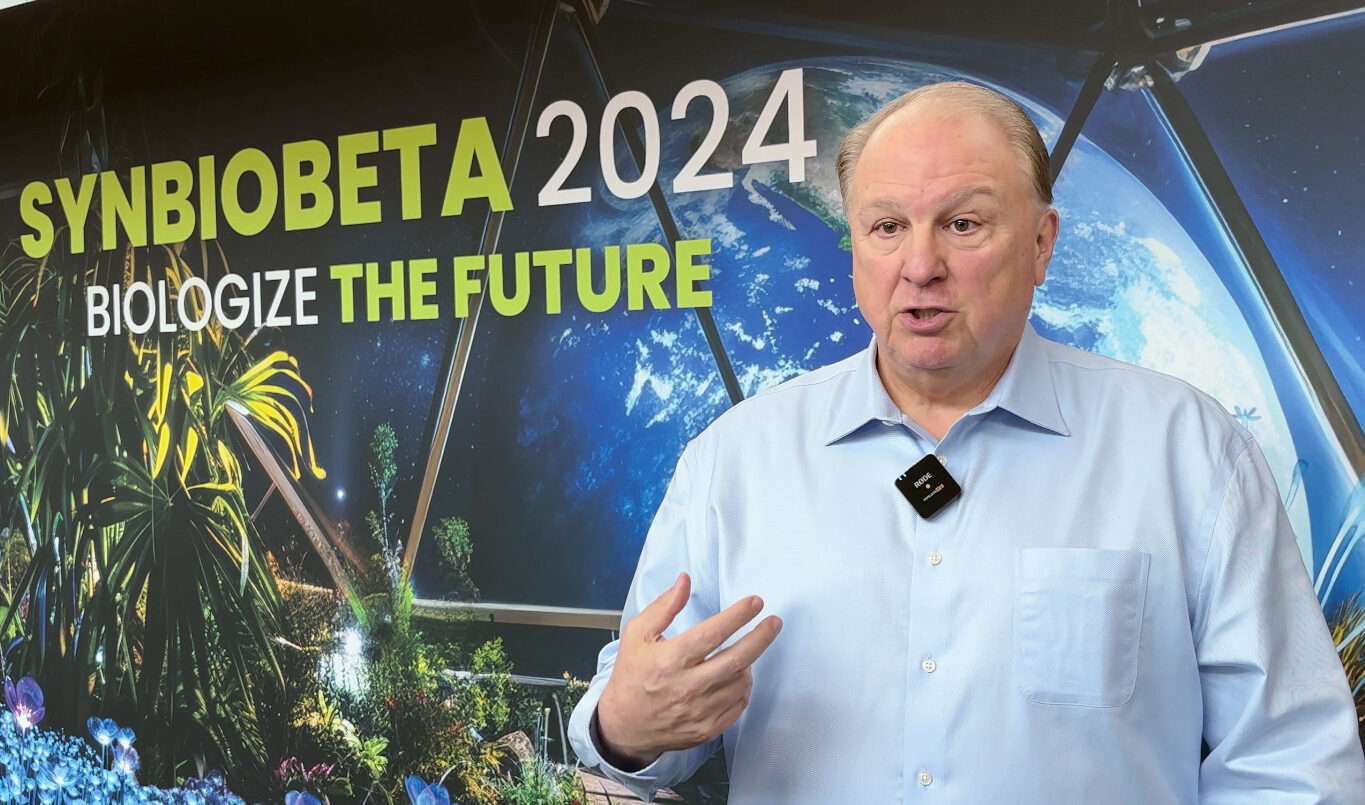US biomanufacturing capacity is 40-50 years old and was built for pharmaceuticals, chemicals, and biofuels, says Liberation Labs CEO Mark Warner. It can make the next generation of bioproducts, he says, “but not at the scale or cost structure that’s needed.”
What’s needed, he argues, are modern facilities that can produce everything from enzymes, colors and flavors to dairy proteins, ag biologics and infant formula ingredients, with cost structures that give them a fighting chance to compete.
AgFunderNews caught up with Warner at the SynBioBeta conference in San Jose to discuss:
- The current state of biomanufacturing capacity in the US.
- Building—and funding—the new Liberation Labs site in Richmond, Indiana.
- The role of government in advancing the bioeconomy.
- What else—aside from fit-for-purpose biomanufacturing capacity—the industry needs.
A ‘legacy’ network?
Liberation Labs is building 600,000-liters of new biomanufacturing capacity in Indiana that is tailored to the needs of the next generation of ingredients made via precision fermentation, explained Warner: “The current network out there today is a legacy network. It averages 40-50 years old and it was built for pharmaceuticals, chemicals, and biofuels. It can make the products that these new technologies want to make [food proteins, flavors, colors, etc], but it’s not making them at the scale or cost structure that’s needed.”
The Richmond facility “is designed for both foods and non foods,” said Warner, a chemical engineer with many years of experience in bioprocess scaleup and commercialization. “It’s got high oxygen transfer aseptic aerobic fermentation, very modern sterile design, and can run very long fermentations. Downstream recovery is designed specifically for very high-yield recovery. It’s multistage ceramic microfiltration, multistage spiral wound ultrafiltration, evaporation, and agglomeration spray drying.
“Honestly in this environment, just to be able to go from sugar to final dried product on the same site, very few facilities can do that today, especially in the US.”
The new site can also run a broader range of organisms than the majority of contract manufacturers, he claimed. “The best example would be methanol-fed [yeast] Pichia Pastoris, the most common GRAS-approved organism in the US today. Very few of these legacy facilities can run it. It’s very hard to retrofit an old facility to accept methanol. When we look at the range of organisms out there, we’re confident we can host the majority of them.”
Funding the bioeconomy
Asked about funding the $115 million Liberation Labs facility in Richmond, he said: “So far we’ve been able to raise $36 million of equity; we’ve got a $30 million equipment financing mechanism; and a $25 million USDA loan guarantee; and we’re in the late stages of a fundraise now. We’ve had an external lead since the end of last year, and we’re expecting a close in the $75 million range by the middle of this year, which will give us additional runway and money to use towards development of additional projects.”
In general, he said, “We’re absolutely convinced that once we start hitting traditional return mechanisms, there’s plenty of money there. But we need to get those binding offtakes, and acknowledge that everybody along the supply chain needs to make some margin.”
The unit economics of precision fermentation
Interest in using the Richmond facility has come from a mix of startups and larger companies in the food and non-food space, he said. “We have confidence that by the time the facility comes on early next year, we’ll have ample backlog under contract.”
As to whether the unit economics of precision fermentation only make sense for very high-value ingredients, rather than commodity-type food proteins such as casein and whey, he said. “Food products, especially commodities like whey, are challenging, and need probably the bigger facility we have planned to really get to cost parity. But there’s a lot of other products, materials, infant formula components, agricultural biologics, that are already very profitable both for us and for the end user today.”
Improved strains, continuous processing…
When it comes to the various levers the industry can pull to drive efficiency in biomanufacturing, he said: “We’ve been impressed by the strain improvements we’ve seen over the last couple of years as we’ve talked to both startups and large CPG type companies.”
As for continuous processing, which is often touted as a potential gamechanger for the industry, he said, “What I would say is we like to focus on productivity. A batch fermentation that gives me a high titer [the amount of an expressed target molecule relative to the volume of liquid] in one day could be better than a week-long continuous [operation].
“If you run continuous fermentation, what you really need is a robust sterile design, and we believe being more modern than the other facilities, if continuous fermentation gets to that [more advanced] stage, we’ll be set up to run it. But fed-batch and draw and fill [a semi-continuous process] are our base case, which are about halfway to two thirds of the way to continuous fermentation.”
Further reading:
🎥Fats from fermentation: Chewing the designer fat with Nourish Ingredients
🎥Coffee with a kick… but no caffeine? Rarebird spills the beans on paraxanthine




